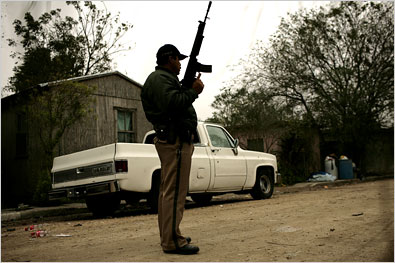| Want to send this page or a link to a friend? Click on mail at the top of this window. |
More Special Reports |
| A SPECIAL SECTION: Haiti since the January 12, 2010 Earthquake |
| Posted September 25, 2010 |
| International |
|
|
|||
|
Mexican Drug Trafficking |
|||
|
|
|||
 |
|||
|
OSCAR HIDALGO FOR THE NEW YORK TIMES |
|||
|
|
By The New York Times |
| Violence on the Border |
| Fighting 'Zones of Impunity' |
| Documenting the Turmoil |
| Wehaitians.com, the scholarly journal of democracy and human rights |
| More from wehaitians.com |